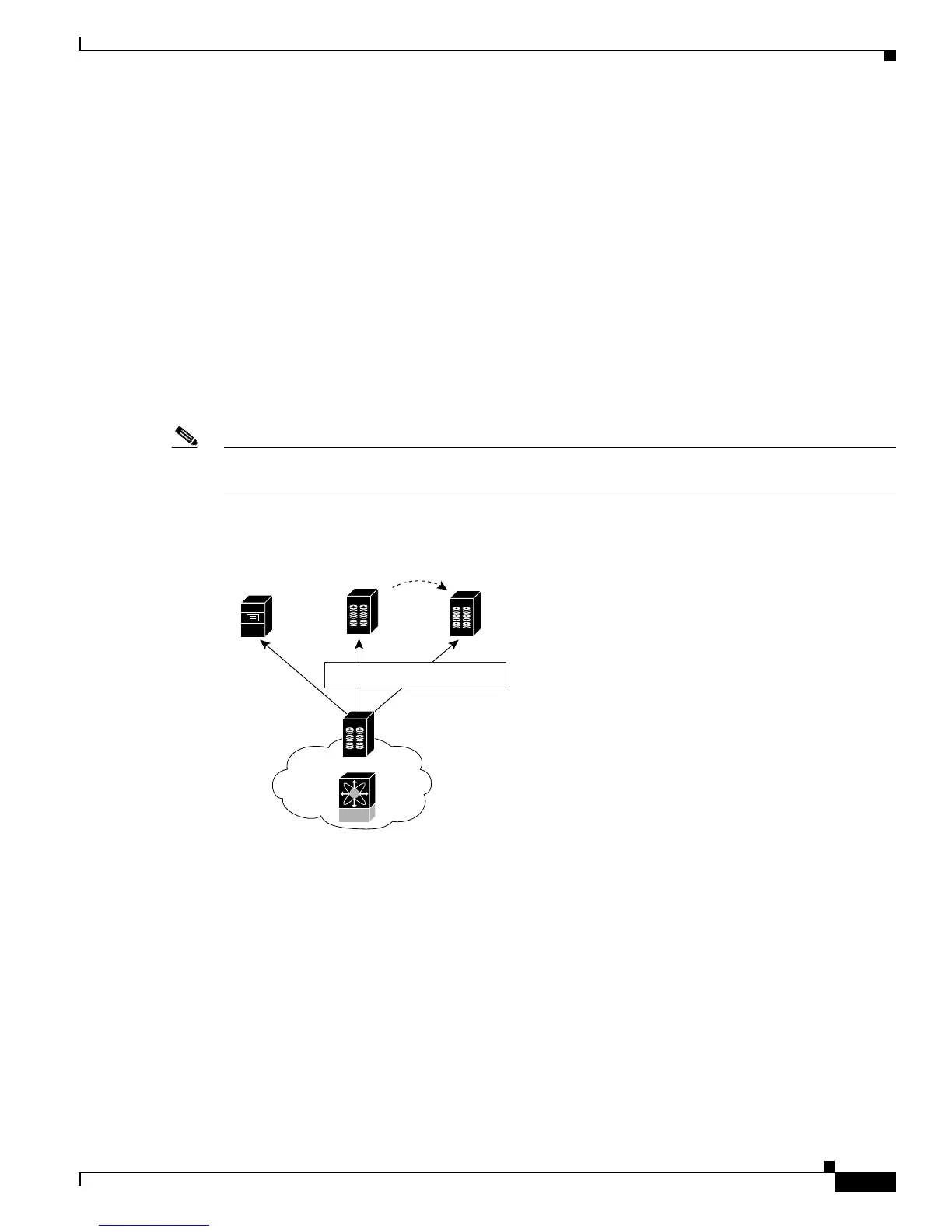Send documentation comments to mdsfeedback-doc@cisco.com
27-3
Cisco MDS 9000 Family Fabric Manager Configuration Guide
OL-17256-03, Cisco MDS NX-OS Release 4.x
Chapter 27 SAN Device Virtualization
About SDV
• Clustering (multiple initiators) compounds the problem, and the failover procedure must be repeated
for each server of the cluster. Think of a server cluster as a set of HBAs–any storage array FC ID
changes must be performed for each HBA.
SDV enables you to achieve the following performance targets:
• Reduce the amount of time it takes for data migration, and ultimately the overall amount of
downtime.
• Easily scale to larger numbers of devices.
Figure 27-4 illustrates the benefits of SDV. In this configuration, disk array Y replaces disk array X.
When disk array X was deployed, the user created virtual devices for all the Fibre Channel interfaces
using SDV. After data replication from disk array X was completed, the user briefly pauses activity on
the application server and relinked disk array Y to the virtual devices used by the server, completing the
swapout of disk array X. No zoning changes or host operating system configuration changes were
required during the time-critical period when the swap was performed; this significantly minimized
application downtime.
Note The array administrator will likely have to perform actions on array Y for it to become a primary device
and accept server logins before linking the virtual device to the array Y pWWN.
Figure 27-4 SDV Example
Key Concepts
The following terms are used throughout this chapter:
• Virtual device—The virtualized or proxy representation of the real device, which is registered with
the name server and has a pWWN and FC ID. A virtual device exists as long as its real (physical)
counterpart is online. The virtual device pWWN and FC ID must be unique and cannot clash with
any real device pWWNs and FC IDs.
• Virtual domain—Reserved by SDV to assign FC IDs to virtual devices. If the switch that reserved
the domain goes down, another switch takes over its role using the same domain.
• Primary device—The device that is configured as primary. By default, the primary device becomes
the active device if it is online.
159897
Server
Virtual
Device
Storage Arrays
X
Y
Physical to Virtual Mapping

